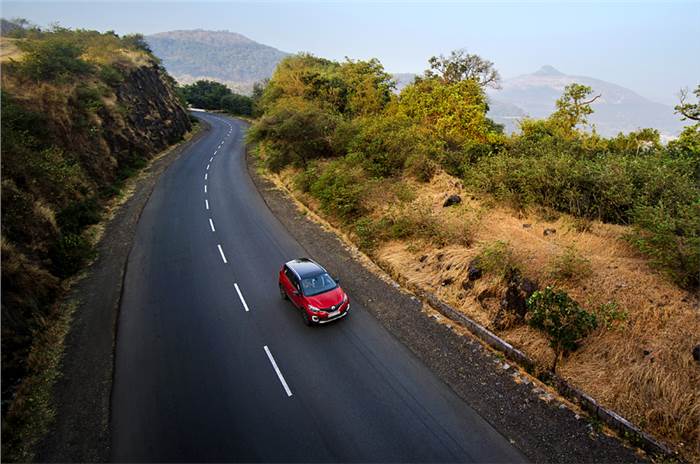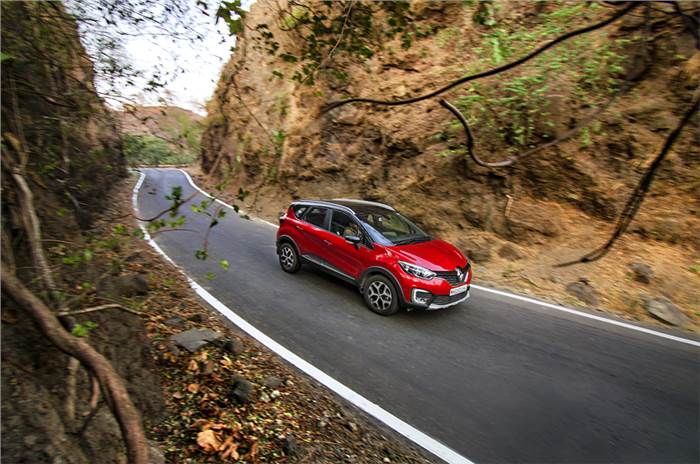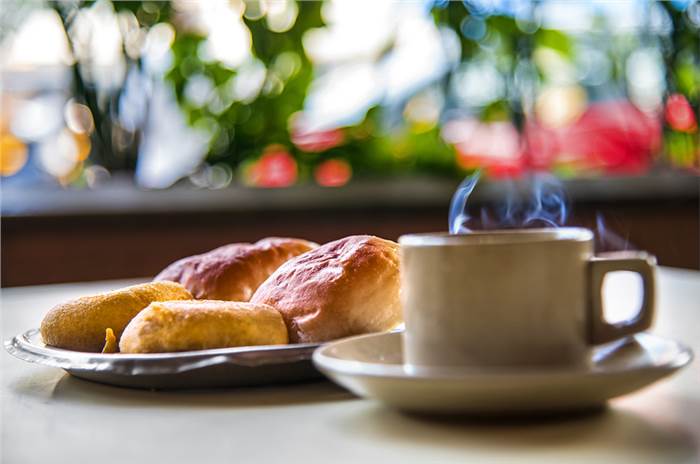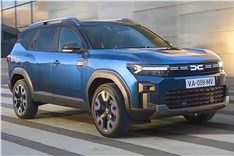Back in time: Road tripping with the Renault Captur petrol
We take the Renault Captur petrol for a road trip to try and relive the magic of the old Mumbai-Pune highway.
Published On Dec 28, 2018 06:53:00 PM
8,965 Views
Follow us onThe walls are peeling, the furniture is frayed and the cups are chipped, but it wasn't always like this. It is hard to believe that once upon a time this decrepit hotel was a pit-stop for everyone from film stars to business magnates to political bigwigs. Anyone travelling from Mumbai to Pune would make a stop at Hotel Ramakant and you had to wait to get a table. The only sign of its glory days is a board in Marathi that documents its history from cart to shop, including all the celebrities who have come here. Today the hotel is empty except for a couple sharing a vada pav. So what happened?
To understand the fate of Ramakant, we have to go for a drive. Not just any ordinary drive, we will go where no car (other than one specially modified 1982 DeLorean) has gone before – a drive back in time. The car we're driving is the new petrol-powered Renault Captur. It’s rather appropriate, since a quarter century ago most cars were driven by petrol motors and diesel was reserved mostly for commercial vehicles; and the drive between Mumbai and Pune was then an adventure that called for careful planning and preparation, along with a big dollop of luck. But before we begin this drive, let’s establish the present scenario.

THE EXPRESSWAY THAT CHANGED IT ALL
Imagine you got an assignment to do a travelogue from Mumbai to Pune. What would you write?
"Battled traffic and dug-up roads till Kalamboli. Hit the Mumbai-Pune Expressway after break at McDonald’s. Paid Rs 230 toll at Shendung. Then reached Pune a little after an hour on the road."
In short: boring stuff. It’s a drive I do regularly and perhaps the most exciting things on this road are those colourful hoardings put up to beautify the landscape and shift the drivers’ attention away from the road. Sarcasm aside, we need to thank the folks who built expressway connecting the two cities. This Captur takes me door-to-door from Mumbai to Pune in less than three hours thanks to this Expressway.
I remember a time when it took me anywhere between five and 10 hours to do the distance. Today, I can travel from Mumbai to Pune for a 9am meeting, arriving fresh and raring to go; whereas before the Expressway opened in 2000, you had to reach out for a bar of soap and a towel after the trip. True my first-generation Maruti 800 had no air-conditioning and this Captur has stuff like automatic climate control and a touchscreen – all of which I would then have imagined was sci-fi.

While a lot of credit goes to modern car technology that has made our drives more comfortable, we shouldn’t forget the roads that made it possible; and the Mumbai-Pune Expressway was the first of its kind – a 93.1km, access-controlled, concrete, six-lane, high-speed expressway that changed the way we travel.
THE NEW JOURNEY ON AN OLD ROAD
For my drive back in time, I decide to take the old Mumbai-Pune National Highway 4 which has now been re-numbered to NH48. It was predominantly a two-lane highway with just a few sections broad enough to host four lanes. At Kalamboli, you can either enter the Expressway or take the NH4 / NH48 / old Pune highway (whatever you call it). The first popular pit-stop on this route was the 'Dutta Vada Pav' shop as you exit Panvel. I've never stopped there and I don’t stop now. My first stop was Khopoli, at the base of the Bhor Ghat. The jewel in Khapoli’s crown was Ramakant hotel, with its vada pavs and poori-bhaajis. Today, it exists as a sad shell of a once-glorious past.
Khopoli, for travellers, was once akin to the Everest Base Camp for mountaineers – a break to renew your energy, check your equipment (your car) before you took on the challenge that is the narrow steep road ahead. Since cars then didn’t have an effective handbrake, you could burn your clutch while balancing the car on it and your accelerator while trying to stop it rolling back in bumper-to-bumper traffic led by overloaded trucks lumbering uphill at a glacial place. And in case a vehicle broke down, which was quite frequently, all you could do was find some rocks to wedge behind your tyres and hope your passenger was someone with an opus of entertaining stories.

Today, there is hardly any traffic and the drive uphill is uneventful. I don’t know if they have changed the road’s gradient or the Captur’s, 106hp engine is making it look easy. It doesn't have the strongest mid-range; but it does the job and the fearful ghat is now a tame puppy. And without the traffic it’s an enjoyable road to drive on – much more engaging than the Expressway. I’m starting to love it.
While you are driving through the ghat, you might spot a train making its way through the hills. If you are interested in history, Google the history of Indian railways and Bhor Ghat. All I will reveal is that it was a feat of engineering that took 24,000 lives before the Mumbai-Pune line was opened in 1863.
While the present road takes you back to the Expressway for a bit before you exit at Lonavala to reconnect with the old highway, I remember having to drive through Khandala to reach Lonavala. That stretch, I think, has been gobbled up by the Expressway.
LONAVALA’S FADING CHARM
You knew that you had reached Lonavala by the traffic jam caused by all the cars parked, and double-parked by the road to buy Maganlal’s chikkis. Those who knew better would drive down to Cooper’s, opposite the railway station, to stock up on their delicious fudge and copra pack. The innocuous shop looks the same as it did a lifetime ago. While Maganlal has today become a large brand, Cooper’s remains a humble shop selling tasty fudge and copra.
Since I am in Lonavala, I decide to re-visit some of the lesser known spots I had stumbled upon, where few tourists came. They are difficult to find, since there is new construction and buildings where there used to be open land. I am glad at the Captur’s fantastic ground-clearance when at times I have to get off the asphalt and take a shortcut. If you are a competent driver, this car’s ability to tackle terrain is fantastic. It may not be a 4WD; but then I’m not a candidate for the Rainforest Challenge.

Lonavala is a sad experience for me. It’s not just the rampant construction and boisterous crowd that the Expressway has bought in. Lion’s Point, of which I have many memories, is a garbage dump. Even the lesser-known spots have been discovered and are littered with broken alcohol bottles and discarded plastic. I don’t think I’m ever coming back here.
The drive to Pune from this point onwards is comparatively tame. Yes there is the less-intimidating Kamshet Ghat to be crossed before you reached Pune. In the old days, this was another likely place where you could encounter a jam. Thereafter, it’s a straight run past Vadgaon and Talegaon, and on to Pune.
AS GOOD AS IT GETS
On the way back from Pune I opt to take the Expressway. I have a dinner to attend and playtime is over. The road is brown and boring and the numbers on the speedometer are just technical boasts of the Captur’s performance. The Expressway is like the logical and emotionless Dr Spock that gets the job done most efficiently. The old highway on the other hand, with black asphalt and green, hoarding-free scenery, is like Amitabh Bachchan enjoying his second run.
So for the next time I have to go to Pune, which road would I chose: old or new? Actually I would probably do both – old, one way; new, the other. And the next time you have to do this trip, I would definitely recommend you do the same. The old route is full of charm and is now paved, marked and smoother than it ever was before, and the vada pav at Ramakant is as good as it was in the last century.
Also see:
2018 Renault Captur Petrol-MT review, test drive
2018 Renault Captur long term review, second report
Renault Captur vs Creta vs Duster comparison
2017 Renault Captur video review
2017 Renault Captur India review, test drive
Copyright (c) Autocar India. All rights reserved.












.jpg&w=234&h=156&q=90&c=1)

Comments
Member Login
Personal Details
No comments yet. Be the first to comment.